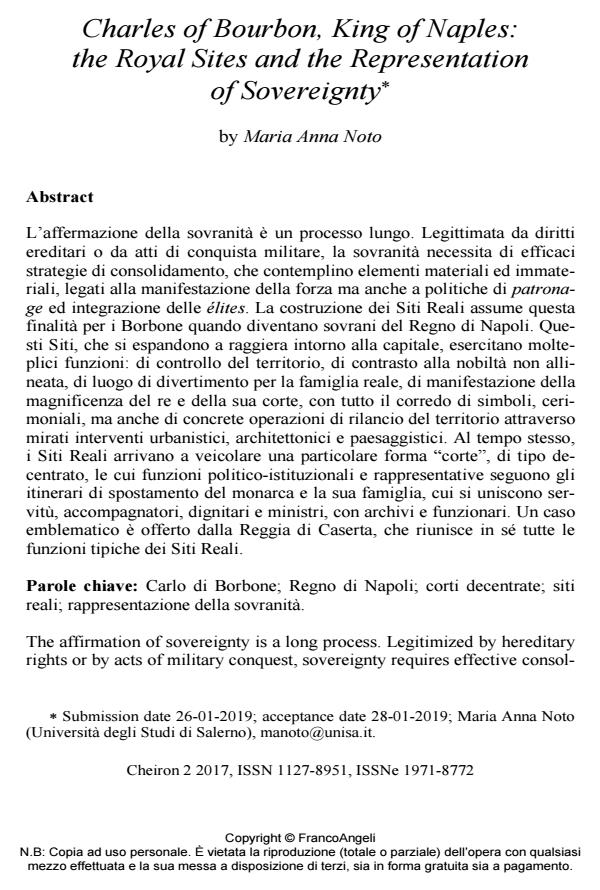Charles of Bourbon, King of Naples: the Royal Sites and the Representation of Sovereignty
Journal title CHEIRON
Author/s Maria Anna Noto
Publishing Year 2019 Issue 2017/2
Language English Pages 27 P. 201-227 File size 178 KB
DOI 10.3280/CHE2017-002008
DOI is like a bar code for intellectual property: to have more infomation
click here
Below, you can see the article first page
If you want to buy this article in PDF format, you can do it, following the instructions to buy download credits

FrancoAngeli is member of Publishers International Linking Association, Inc (PILA), a not-for-profit association which run the CrossRef service enabling links to and from online scholarly content.
The affirmation of sovereignty is a long process. Legitimized by hereditary rights or by acts of military conquest, sovereignty requires effective consol idation strategies, which contemplate material and immaterial elements, linked to the manifestation of force but also to the integration of the élites. The construction of the Royal Sites assumes this purpose for the Bourbons when they become sovereigns of the Kingdom of Naples. These Sites, which expand radially around the capital, have multiple functions: control of the territory, contrast to the non-aligned nobility, place of entertainment for the royal family, magnificence of the king and his court, with all the set of symbols, ceremonials. But the Royal Sites also allow to carry out concrete operations to relaunch the territory through urban, architectural and landscape interventions. At the same time, the Royal Sites arrive to convey a particular form of "court": a "decentralized court", whose politicalinstitutional and representative functions follow the itineraries of movement of the monarch and his family, with servants, accomplices, dignitaries and ministers, archives and officials. An emblematic case is offered by the Royal Palace of Caserta, which brings together all the typical functions of the Royal Sites.
Keywords: Charles of Bourbon; Kingdom of Naples; "decentralized court"; Royal Sites; Representation of Sovereignty.
Maria Anna Noto, Charles of Bourbon, King of Naples: the Royal Sites and the Representation of Sovereignty in "CHEIRON" 2/2017, pp 201-227, DOI: 10.3280/CHE2017-002008